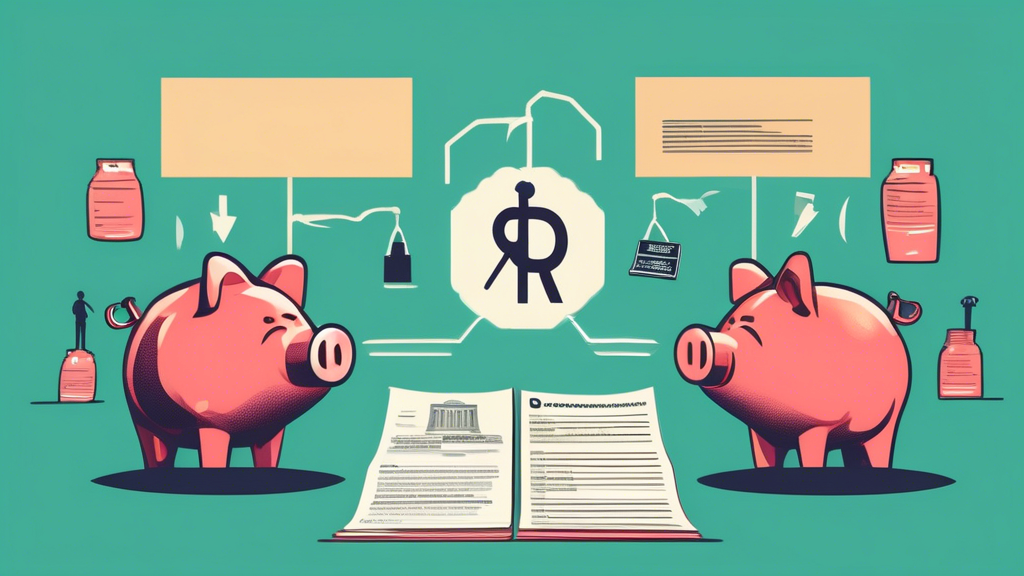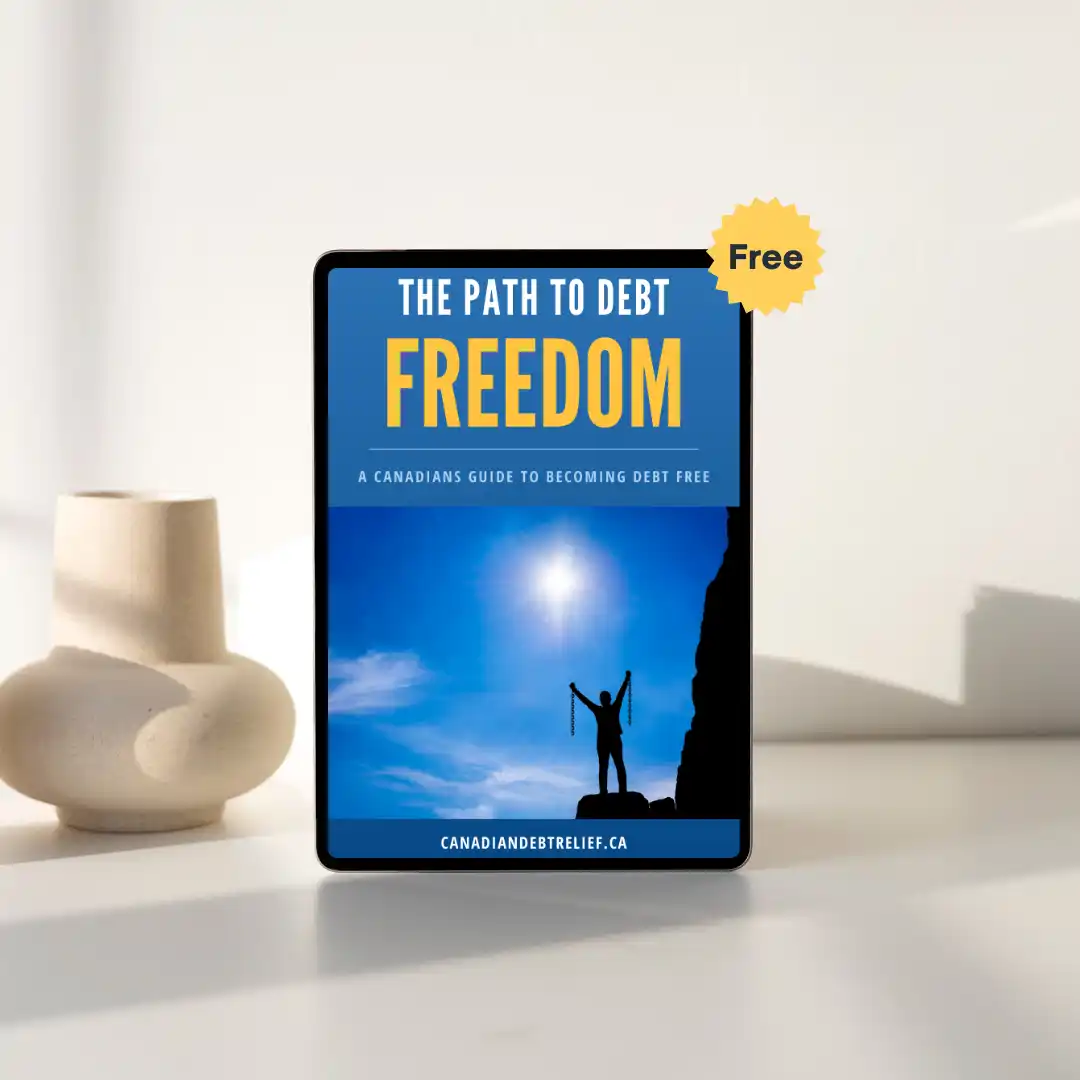In today’s unpredictable financial landscape, individuals may find themselves grappling with overwhelming debt, leading them to explore options like bankruptcy or a consumer proposal. These two solutions often surface during the most challenging financial periods and, understandably, can be sources of confusion for many. While both aim to offer relief and a fresh start, the difference between bankruptcy and consumer proposal is substantial and choosing the right path depends largely on one’s unique financial circumstances.
Bankruptcy tends to be perceived as the last resort for those who cannot find any other way out of their financial woes. It involves a legal process that allows individuals to eliminate most of their debts but comes with significant repercussions, such as a severe impact on credit scores and potential loss of assets. Conversely, a consumer proposal offers a more moderate solution, allowing individuals to negotiate with creditors to repay a portion of their debt over a specified period. This option tends to be less damaging to one’s credit history and assets, providing a more controlled and less drastic form of debt relief.
Understanding the subtle yet critical difference between bankruptcy and consumer proposal is crucial for anyone facing financial turmoil. The decision between the two can significantly influence one’s future financial health and ability to regain stability. As we delve deeper into the characteristics, advantages, and disadvantages of each option, this article aims to equip you with the knowledge to make an informed choice tailored to your financial situation.
Introduction to Financial Solutions: Bankruptcy vs. Consumer Proposal
When financial difficulties become overwhelming, individuals often explore various solutions to regain control over their finances. Among the most recognized options are bankruptcy and consumer proposals. Understanding these mechanisms is crucial for anyone contemplating drastic measures to address overwhelming debt. The difference between bankruptcy and consumer proposal is fundamental to making an informed choice that aligns with one’s financial situation.
Common Circumstances Leading to Bankruptcy or Consumer Proposals
Individuals usually consider bankruptcy or consumer proposals when they face insurmountable debt and find themselves unable to meet their financial obligations. Common circumstances that push individuals to these solutions include:
- Job Loss: Sudden unemployment can significantly reduce income, making it challenging to keep up with debt payments.
- Medical Expenses: Unexpected medical bills can accumulate rapidly, leading to financial strain.
- Credit Card Debt: High-interest credit cards often result in mounting debt that becomes unmanageable over time.
- Divorce: The financial implications of ending a marriage can leave one or both parties struggling with debts they cannot pay off.
- Business Failure: Entrepreneurs whose businesses fail may face personal financial ruin if they had invested heavily or guaranteed business loans.
Each of these situations can deteriorate one’s financial health to the point where regular monthly payments are no longer feasible. At this juncture, options like bankruptcy and consumer proposals come into the picture as potential lifelines.
Key Differences Between Bankruptcy and Consumer Proposals
While both bankruptcy and consumer proposals provide pathways to resolve severe debt issues, they are distinct legal proceedings with different implications for individuals. The most notable difference between bankruptcy and consumer proposal lies in their approach to debt resolution and the impact on the debtor’s future.
1. Bankruptcy
Bankruptcy is a legal process that offers relief from most types of debt. When a person files for bankruptcy, they assign their assets (with some exceptions) to a Licensed Insolvency Trustee (LIT), who then liquidates these assets to repay creditors. The individual is then discharged from the remaining debts, granting them a fresh financial start. However, the process does come with significant repercussions:
- Impact on Credit Score: A bankruptcy filing remains on a credit report for several years, making future borrowing challenging.
- Asset Forfeiture: Certain assets may have to be surrendered, leaving the individual with limited possessions.
- Public Record: Bankruptcy filings are public records, so the individual’s financial struggles become accessible information.
2. Consumer Proposal
A consumer proposal is a middle ground between extreme debt and bankruptcy. It involves negotiating with creditors to settle debts for less than the full amount owed, usually with the help of a Licensed Insolvency Trustee. The debtor then makes reduced, affordable monthly payments over a period of up to five years. Key aspects of consumer proposals include:
- Debt Repayment: Instead of absolving debt entirely, a consumer proposal involves repaying a portion of it based on what the debtor can reasonably afford.
- Asset Retention: Individuals can typically keep their assets, as no liquidation is required.
- Impact on Credit Score: While it does affect credit ratings, the impact of a consumer proposal is generally less severe than that of a bankruptcy.
Understanding these fundamental differences is crucial when deciding between the two options. Each individual’s financial situation is unique, and what works for one may not be suitable for another. Evaluating the nature and extent of one’s debts, as well as one’s ability to make repayments, should guide the decision-making process.
Moreover, while bankruptcy might be a quicker solution, it carries more severe long-term effects on credit reputation, which is important for future financial stability and opportunities. Conversely, consumer proposals offer a more balanced approach, often resulting in a constructive compromise that reduces debt while allowing for asset retention and a quicker credit recovery.
Making the choice between these two options requires careful consideration of personal financial circumstances, immediate needs, and long-term goals. Consulting with a financial advisor or Licensed Insolvency Trustee can provide invaluable guidance tailored to one’s specific situation. As we delve deeper into this topic, it is essential to keep these foundational distinctions in mind to better understand the practical applications and consequences of each debt relief measure.
See if you qualify for debt relief

Detailed Comparison: Bankruptcy vs. Consumer Proposal
Advantages and Disadvantages of Filing for Bankruptcy
Filing for bankruptcy can seem like a daunting decision, but it is a legal process designed to provide relief for those overwhelmed by debt. Let’s delve into the pros and cons of this option.
Advantages:
- Debt Erasure: One of the most significant benefits of bankruptcy is the potential for a fresh start. Qualified debts can be discharged, offering relief from burdensome financial obligations.
- Legal Protection: Once you file for bankruptcy, an automatic stay goes into effect, prohibiting creditors from continuing debt collection efforts, including wage garnishments and lawsuits.
- Structured Process: Bankruptcy follows a well-defined legal procedure overseen by a bankruptcy trustee, which can provide a sense of order and predictability during a financially turbulent time.
Disadvantages:
- Credit Score Impact: Bankruptcy has a severe impact on your credit score and remains on your credit report for up to seven to ten years, depending on the type of bankruptcy filed.
- Asset Liquidation: In some cases, you may need to liquidate certain assets to repay creditors. This can mean losing your house, car, or other valuables.
- Public Record: Bankruptcy filings are a matter of public record, which could potentially be accessed by employers, landlords, or others performing background checks.
Advantages and Disadvantages of Opting for a Consumer Proposal
A consumer proposal is an alternative to bankruptcy that involves negotiating with creditors to settle your debts. Unlike bankruptcy, it allows for greater flexibility and control over your financial situation.
Advantages:
- Preservation of Assets: One of the main advantages is that you can retain your assets. Unlike bankruptcy, a consumer proposal doesn’t require you to liquidate property or other critical assets.
- Credit Impact: Although a consumer proposal will still affect your credit score, the impact is generally less severe than that of bankruptcy. It stays on your credit report for three years after completion, which is shorter than bankruptcy.
- Negotiation Flexibility: The process allows for negotiation with creditors. You can propose a plan that involves paying a portion of the debts over a period of up to five years, tailored to your financial capacity.
- Legal Protection: Similar to bankruptcy, a filed consumer proposal stops creditors from pursuing collection actions and legal proceedings.
Disadvantages:
- Commitment: A consumer proposal requires a long-term commitment to a repayment plan. Missing payments can result in the proposal being annulled, and creditors could then resume collection efforts.
- Debt Threshold: There’s a debt limit for filing a consumer proposal. It is suited for individuals with debts of less than $250,000, excluding mortgages.
- Cost: While often less expensive than bankruptcy, there are still costs involved in filing a consumer proposal. Administrative fees and the agreed-upon repayment amounts must be factored into your financial planning.
Practical Scenarios to Illustrate When to Choose Bankruptcy or a Consumer Proposal
Choosing between bankruptcy and a consumer proposal boils down to individual circumstances. Here are a few practical scenarios to help illustrate when each option might be more appropriate.
Scenario 1: Excessive Unsecured Debt with Limited Assets
Imagine Jane, who has accumulated $100,000 in unsecured debt through credit cards and personal loans but owns few significant assets. Jane struggles to make minimum payments, and her income isn’t enough to sustain a long-term repayment plan. Filing for bankruptcy would likely be the most viable option for Jane, allowing her to discharge her debts and start anew.
Scenario 2: Stable Income with the Desire to Retain Assets
Consider John, who has a stable job and owns a home with a moderate amount of equity. He has a total unsecured debt of $80,000. He’s worried about losing his home and other assets if he files for bankruptcy. In this case, a consumer proposal would make more sense for John. He can negotiate a manageable repayment plan with his creditors while retaining his assets and reducing the burden of debt incrementally.
Scenario 3: Business Owner Facing Personal Financial Crisis
Sarah owns a small business that recently suffered significant losses, leading to personal financial difficulties and accumulating $200,000 in unsecured debt. Given her future business prospects and asset ownership, Sarah might find a consumer proposal a better fit. It would allow her to work towards debt repayment while keeping her business operational and protecting her personal assets.
Scenario 4: No Significant Assets but Severe Debt
Mark doesn’t own significant assets but owes $150,000 in unsecured debts. His income is erratic due to his freelance work. For Mark, bankruptcy may be more appropriate as it can provide immediate debt relief and doesn’t involve repayment commitments beyond liquidating any non-exempt assets.
In summary, understanding the difference between bankruptcy and consumer proposal involves examining the specifics of your financial situation, your ability to commit to repayment plans, and the level of asset protection you require. Each option has distinct advantages and disadvantages that must be weighed carefully.
Concluding an exploration of the difference between bankruptcy and consumer proposals reveals a spectrum of financial solutions tailored to distinct personal circumstances. Bankruptcy, with its profound implications on credit scores and asset liquidation, often serves as a measure for those facing insurmountable debt. It provides an immediate cessation of creditor harassment but comes with long-lasting ramifications on one’s financial reputation and asset ownership.
Conversely, a consumer proposal offers a less drastic alternative, enabling debtors to negotiate more manageable repayment terms while retaining their assets. It presents an opportunity to settle debts over time, typically resulting in less severe credit repercussions compared to bankruptcy. However, the process demands a commitment to consistent payments and may extend longer than bankruptcy proceedings.
Selecting between bankruptcy and a consumer proposal hinges on an individual’s specific financial landscape. Severe financial despair with no feasible recovery path may necessitate bankruptcy, whereas a consumer proposal could be more appropriate for those who foresee a steady yet constrained financial recovery. Understanding these nuanced differences equips individuals to make informed decisions, positioning them better to navigate financial turmoil and reclaim stability.
See if you qualify for debt relief
